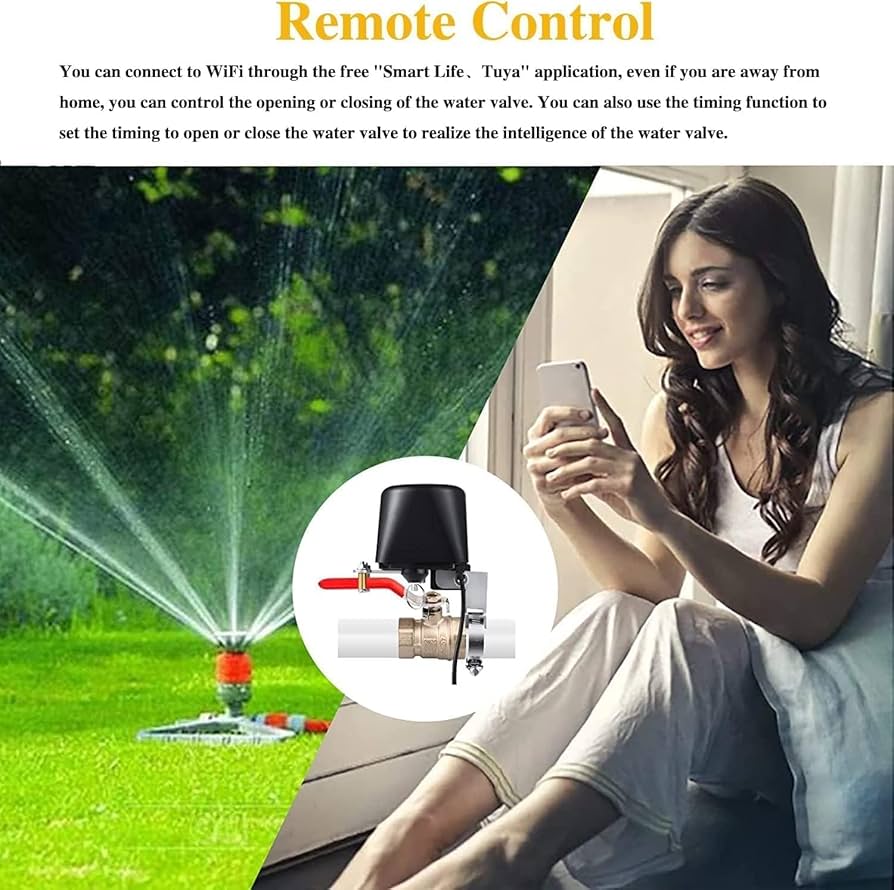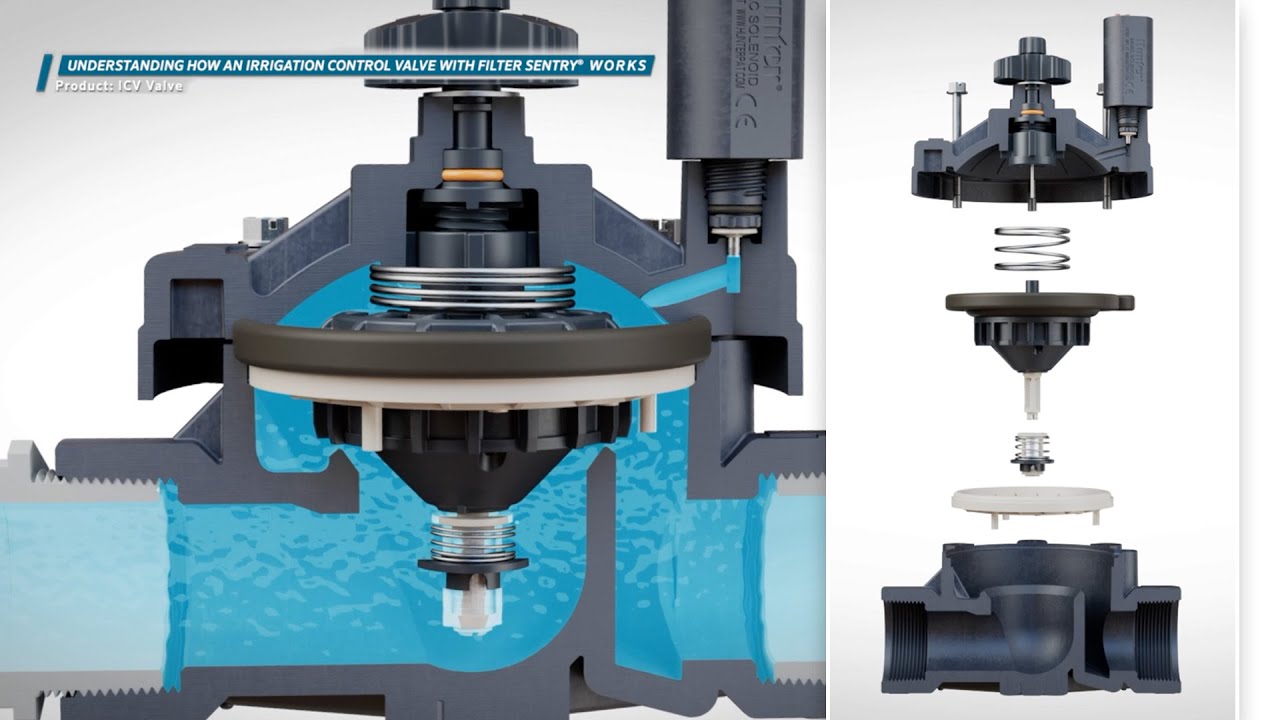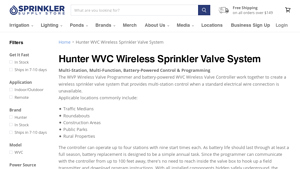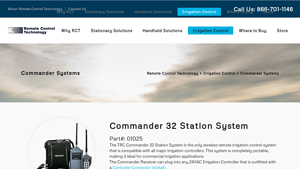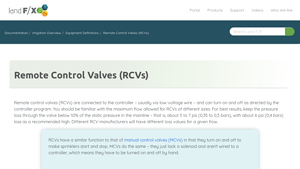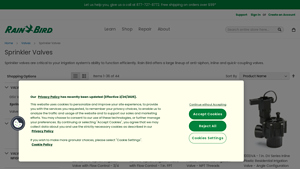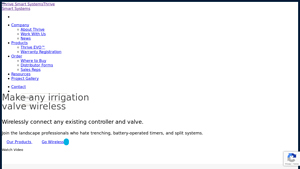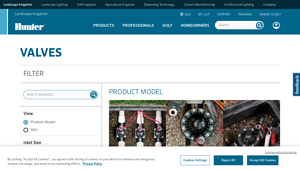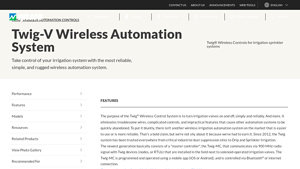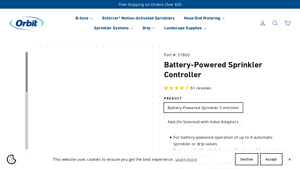Introduction: Navigating the Global Market for remote control valve irrigation
In the rapidly evolving landscape of agricultural technology, sourcing efficient remote control valve irrigation solutions poses a significant challenge for international B2B buyers. With the increasing demand for precision agriculture and the need to optimize water usage, understanding the nuances of remote control valves becomes essential for stakeholders across Africa, South America, the Middle East, and Europe. This comprehensive guide delves into various types of remote control valve systems, their applications in diverse environments, and the critical factors to consider when selecting reliable suppliers.
From exploring the intricacies of battery-powered wireless systems to evaluating the performance of solenoid-operated valves, this resource equips buyers with the knowledge needed to make informed purchasing decisions. Additionally, the guide covers essential aspects such as cost analysis, warranty considerations, and the importance of supplier vetting to ensure long-term reliability and support.
By providing actionable insights and a global perspective, this guide empowers B2B buyers to navigate the complexities of the remote control valve irrigation market confidently. Whether you are a contractor in Vietnam or a distributor in Germany, understanding these elements will enhance your ability to select the most effective solutions for your irrigation needs, ultimately driving productivity and sustainability in your operations.
Understanding remote control valve irrigation Types and Variations
| Type Name | Key Distinguishing Features | Primary B2B Applications | Brief Pros & Cons for Buyers |
|---|---|---|---|
| Wireless Remote Control Valves | Battery-powered, operates without wiring, portable programming | Public parks, construction sites, rural areas | Pros: Easy installation, no wiring needed, vandal-resistant. Cons: Battery dependency may require regular maintenance and replacement. |
| DC Latching Solenoid Valves | Requires low power, operates with pulse signals | Agricultural irrigation, landscape design | Pros: Energy-efficient, minimal power consumption, ideal for solar applications. Cons: May require compatible controllers, limited range of operation. |
| Multi-Station Control Systems | Can control multiple valves simultaneously, programmable settings | Large-scale commercial irrigation | Pros: High efficiency, customizable irrigation schedules, suitable for complex systems. Cons: Higher initial investment, potential complexity in setup. |
| Anti-Siphon Valves | Prevents backflow, integrated design for safety | Residential and commercial landscapes | Pros: Reduces contamination risks, easy to install. Cons: Limited to specific applications, may require additional fittings for some systems. |
| Inline Valves | Compact design, can be installed within the irrigation line | Golf courses, sports fields, horticulture | Pros: Space-saving, efficient flow control. Cons: More challenging to access for maintenance, potential clogging if not properly maintained. |
What Are Wireless Remote Control Valves and Their Applications?
Wireless remote control valves are designed for ease of installation and operation, particularly in areas where traditional wiring is impractical. These valves are battery-powered and can be programmed remotely, making them ideal for applications such as public parks, construction sites, and rural properties. When considering these systems, B2B buyers should evaluate the battery life and replacement frequency, as well as the range of the remote control to ensure adequate coverage for their irrigation needs.
How Do DC Latching Solenoid Valves Benefit Agricultural Irrigation?
DC latching solenoid valves are characterized by their low power requirements, making them particularly suitable for agricultural irrigation and landscape design. These valves operate with pulse signals, which can significantly reduce energy consumption, especially in solar-powered systems. Buyers should assess the compatibility of these valves with existing controllers and consider the operational range, as this may impact their effectiveness in larger agricultural settings.
What Are the Advantages of Multi-Station Control Systems?
Multi-station control systems allow for simultaneous operation of multiple valves, which is essential for large-scale commercial irrigation projects. These systems are programmable, enabling users to customize watering schedules based on specific crop or landscape needs. While they offer high efficiency and versatility, B2B buyers should be aware of the initial investment costs and the potential complexity involved in setting up these systems, particularly in extensive installations.
Why Choose Anti-Siphon Valves for Irrigation Systems?
Anti-siphon valves are essential for preventing backflow and ensuring water safety in irrigation systems. Their integrated design simplifies installation and enhances system reliability. These valves are commonly used in both residential and commercial landscapes. Buyers need to consider the specific applications for which these valves are suited, as well as any additional fittings that may be required for integration into existing systems.
What Are the Key Considerations for Inline Valves in Irrigation?
Inline valves are designed to be installed directly within the irrigation line, offering a compact solution for flow control. They are particularly beneficial in settings like golf courses and sports fields where space is limited. However, maintenance can be challenging since these valves are less accessible. B2B buyers should weigh the advantages of space-saving design against the potential for clogging and the need for regular maintenance to ensure optimal performance.
Key Industrial Applications of remote control valve irrigation
| Industry/Sector | Specific Application of remote control valve irrigation | Value/Benefit for the Business | Key Sourcing Considerations for this Application |
|---|---|---|---|
| Agriculture | Automated irrigation for crop management | Increases yield, optimizes water usage | Compatibility with local climate and crop types |
| Landscaping | Irrigation systems for public parks and urban landscapes | Enhances aesthetic value, reduces labor costs | Durability and vandal-resistance of equipment |
| Construction | Temporary irrigation for new developments | Ensures vegetation establishment, mitigates erosion | Portability and ease of setup |
| Sports Facilities | Irrigation systems for sports fields and complexes | Maintains field quality, supports year-round usage | System scalability and adaptability to field size |
| Horticulture | Greenhouse irrigation systems for diverse plant species | Optimizes growth conditions, conserves water | Precision control features and compatibility with RCVs |
How Is Remote Control Valve Irrigation Applied in Agriculture?
In agriculture, remote control valve irrigation is pivotal for managing water resources efficiently. By automating irrigation schedules, farmers can ensure optimal soil moisture levels, which directly correlates to crop yield. This system is particularly beneficial in regions with variable climates, as it allows for precise water application tailored to specific crop needs. International buyers must consider compatibility with local crops and climate conditions, ensuring that the systems can handle varying water pressures and flow rates.
What Are the Benefits of Remote Control Valve Irrigation in Landscaping?
In landscaping, particularly in public parks and urban areas, remote control valve irrigation systems enhance the aesthetic appeal while significantly reducing labor costs. These systems can be programmed to operate during off-peak hours, conserving water and minimizing runoff. For B2B buyers, sourcing durable and vandal-resistant equipment is crucial, especially in high-traffic areas. Additionally, the ability to control multiple zones remotely can streamline maintenance operations, making it easier to maintain healthy landscapes.
How Does Remote Control Valve Irrigation Support Construction Projects?
For construction projects, temporary irrigation systems are essential for establishing vegetation and preventing soil erosion. Remote control valve irrigation allows for quick setup and adaptability to changing site conditions. This flexibility is particularly valuable in areas prone to drought or heavy rainfall. Buyers in this sector should prioritize systems that are portable and easy to install, ensuring that they can meet project timelines without compromising on environmental sustainability.
Why Is Remote Control Valve Irrigation Important for Sports Facilities?
Sports facilities utilize remote control valve irrigation to maintain optimal field conditions year-round. These systems ensure even water distribution, which is vital for grass health and playability. The ability to manage multiple zones from a single control point enhances operational efficiency, especially during peak seasons. B2B buyers should focus on scalable systems that can adapt to various field sizes and types, as well as those offering features like weather sensors for automated adjustments.
What Advantages Does Remote Control Valve Irrigation Offer in Horticulture?
In horticulture, especially within greenhouses, remote control valve irrigation systems provide the precision needed for diverse plant species. By controlling water delivery with high accuracy, these systems help create ideal growth conditions, which can lead to increased productivity and reduced water waste. Buyers should evaluate the precision control features available in remote control systems, ensuring compatibility with existing irrigation infrastructure and the specific needs of various plant types.
3 Common User Pain Points for ‘remote control valve irrigation’ & Their Solutions
Scenario 1: Difficulty with Installation in Remote Locations
The Problem: B2B buyers often face challenges when installing remote control valve irrigation systems in hard-to-reach or remote areas. For instance, agricultural companies in rural regions of Africa or South America may struggle with traditional wired systems due to the absence of power sources and the high cost of trenching for cable installation. This can lead to increased project timelines and costs, ultimately hindering irrigation efficiency and crop yield.
The Solution: To address this issue, buyers should consider investing in wireless remote control valve systems. Products such as the Hunter WVC Wireless Sprinkler Valve System allow for easy installation without the need for extensive wiring, making them ideal for remote locations. Buyers should ensure the selected system can operate on battery power and offers a robust range—ideally up to 100 feet—to ensure reliable communication between the controller and the valves. Additionally, sourcing systems with vandal-resistant features can protect investments in public spaces or construction sites. When specifying the system, it’s crucial to evaluate the battery life and replacement frequency to maintain operational continuity without frequent maintenance interruptions.
Scenario 2: Inefficient Water Use Leading to Increased Costs
The Problem: Many companies managing irrigation systems face the challenge of inefficient water usage, resulting in increased costs and potential regulatory issues. For instance, a landscaping company in Europe might use outdated manual valves, leading to overwatering and wastage, which not only inflates water bills but can also violate local sustainability regulations.
The Solution: Implementing modern remote control valve irrigation systems can significantly improve water management. Buyers should look for systems that feature programmable controllers allowing for precise control over watering schedules and durations. The TRC Commander 32 Station System is an example of a versatile system that can operate multiple valves simultaneously, adapting to varying landscape needs. Additionally, incorporating soil moisture sensors with the irrigation system can provide real-time data, allowing for adaptive irrigation strategies that optimize water usage. Buyers should prioritize systems that offer the ability to set up customized watering schedules based on specific plant needs and environmental conditions, ultimately leading to cost savings and compliance with sustainability standards.
Scenario 3: Maintenance and Reliability Issues with Existing Systems
The Problem: Existing remote control valve systems may face reliability issues due to outdated technology or poor maintenance practices. For example, a golf course management company may experience frequent failures in their irrigation systems due to aging components or incompatibility among different brands of controllers and valves, leading to inconsistent watering and damage to the course’s turf.
The Solution: To enhance reliability, B2B buyers should consider replacing outdated systems with modern, compatible solutions that offer better integration. Systems like the Hunter WVP Wireless Valve Programmer work seamlessly with various irrigation controllers, allowing for easy upgrades and expansions. Buyers should also invest in systems that come with comprehensive warranties and customer support to mitigate risks associated with maintenance. It’s advisable to conduct a thorough audit of existing irrigation infrastructure to identify compatibility issues and to plan for phased upgrades. Additionally, training staff on proper system maintenance and utilizing diagnostic tools can help in early detection of potential issues, ensuring continuous operation and reducing downtime.
Strategic Material Selection Guide for remote control valve irrigation
What Are the Key Materials for Remote Control Valve Irrigation?
When selecting materials for remote control valve irrigation systems, it is crucial to consider the properties, advantages, and limitations of each option. The choice of material can significantly impact performance, durability, and overall system efficiency. Here, we analyze four common materials used in remote control valve irrigation systems.
How Do Brass Components Perform in Remote Control Valve Irrigation?
Brass is a popular choice for remote control valves due to its excellent strength and corrosion resistance. It typically has a high-temperature rating, making it suitable for various climates. Brass valves can withstand pressures of up to 300 psi, which is advantageous for high-pressure irrigation systems. However, the cost of brass is relatively high compared to plastic alternatives, which can be a concern for budget-conscious buyers.
Pros: Durable, high-pressure rating, corrosion-resistant.
Cons: Higher cost, heavier than plastic, can be susceptible to dezincification in aggressive water conditions.
Impact on Application: Brass is compatible with both potable and non-potable water, making it versatile for various irrigation applications.
Considerations for International Buyers: Compliance with standards such as ASTM B453 is crucial, especially in regions like Europe and the Middle East, where quality regulations are stringent.
What Advantages Do Plastic Materials Offer for Remote Control Valves?
Plastic materials, such as PVC and ABS, are often used in remote control valves due to their lightweight nature and cost-effectiveness. They are resistant to corrosion and can handle moderate pressure ratings, typically up to 150 psi. The manufacturing complexity is lower, allowing for easier and more economical production processes.
Pros: Lightweight, cost-effective, resistant to corrosion.
Cons: Lower pressure rating compared to metal, can be less durable under extreme temperatures.
Impact on Application: Plastic valves are suitable for low to moderate pressure systems and are often used in residential irrigation setups.
Considerations for International Buyers: Look for compliance with standards like ASTM D2466 for PVC and DIN 8063 for ABS, especially in regions like Africa and South America, where material quality may vary.
How Do Stainless Steel Valves Compare in Remote Control Valve Applications?
Stainless steel is known for its exceptional durability and resistance to corrosion, making it an excellent choice for remote control valves in harsh environments. It can handle high pressures and temperatures, often exceeding 300 psi and 200°F. However, the manufacturing complexity and cost are higher compared to brass and plastic.
Pros: Highly durable, excellent corrosion resistance, high-pressure capabilities.
Cons: Higher cost, heavier, may require specific handling during installation.
Impact on Application: Ideal for industrial applications and regions with aggressive water conditions, such as coastal areas.
Considerations for International Buyers: Compliance with international standards such as ASTM A312 is essential, especially in Europe where stringent quality checks are common.
What Role Do Composite Materials Play in Remote Control Valve Systems?
Composite materials, often a blend of plastic and fiberglass, provide a unique combination of strength and lightweight properties. They are designed to withstand high pressures and temperatures, often rated up to 200 psi. The cost is generally moderate, making them an attractive option for various applications.
Pros: Lightweight, high strength, resistant to corrosion.
Cons: May not be as widely available, potential for higher manufacturing costs.
Impact on Application: Suitable for both agricultural and commercial irrigation systems, particularly in areas with variable climates.
Considerations for International Buyers: Ensure compliance with standards such as ASTM D638 to guarantee quality, particularly in regions like South America where material sourcing can be inconsistent.
Summary Table of Material Selection for Remote Control Valve Irrigation
| Material | Typical Use Case for remote control valve irrigation | Key Advantage | Key Disadvantage/Limitation | Relative Cost (Low/Med/High) |
|---|---|---|---|---|
| Brass | High-pressure irrigation systems | Durable and corrosion-resistant | Higher cost and weight | High |
| Plastic | Residential irrigation setups | Lightweight and cost-effective | Lower pressure rating | Low |
| Stainless Steel | Industrial applications in harsh environments | Exceptional durability | Higher cost and handling complexity | High |
| Composite | Agricultural and commercial irrigation systems | High strength with lightweight | Availability issues | Medium |
This guide provides essential insights for international B2B buyers in selecting the appropriate materials for remote control valve irrigation systems, ensuring compliance with relevant standards and suitability for specific applications.
In-depth Look: Manufacturing Processes and Quality Assurance for remote control valve irrigation
What Are the Key Stages in the Manufacturing Process of Remote Control Valve Irrigation Systems?
The manufacturing of remote control valve irrigation systems involves several critical stages that ensure the final product meets both functional and quality standards.
Material Preparation
The first step in the manufacturing process is material preparation. This includes sourcing high-quality materials such as durable plastics, metals, and rubber components that are resistant to corrosion and can withstand varying weather conditions. Suppliers often conduct rigorous quality checks on raw materials to ensure they comply with international standards before they are used in production.
Forming Techniques
Once the materials are prepared, the next stage is forming, which involves shaping the materials into specific components. Common techniques include injection molding for plastic parts and die casting for metal components. These methods allow for precise dimensions and consistency across production batches. Advanced technologies such as CNC machining may also be employed for creating intricate designs and ensuring tight tolerances, which are crucial for the proper functioning of the valves.
Assembly Process
After forming, components are assembled into the final product. This stage may involve manual labor or automated assembly lines, depending on the scale of production. Each valve typically consists of multiple parts, including the body, solenoid, diaphragm, and fittings. It is essential that assembly processes are conducted in a clean environment to prevent contamination and ensure the integrity of the components.
Finishing Touches
The final stage of manufacturing is finishing, which includes surface treatments such as painting, coating, or polishing to enhance durability and aesthetics. For remote control valves, waterproofing and UV resistance are critical features, so manufacturers often apply specialized coatings that meet industry standards.
How Is Quality Assurance Implemented Throughout the Manufacturing Process?
Quality assurance (QA) is a vital aspect of the manufacturing process for remote control valve irrigation systems. It ensures that products not only meet customer expectations but also comply with international regulations.
What Are the Relevant International Standards for Quality Assurance?
Many manufacturers adhere to international quality standards, with ISO 9001 being one of the most recognized. This standard outlines criteria for a quality management system, emphasizing a process-oriented approach to ensure consistent product quality. In addition, industry-specific certifications such as CE (Conformité Européenne) for European markets and API (American Petroleum Institute) certifications for valve performance may be pursued, depending on the application of the valves.
What Are the Key Quality Control Checkpoints?
Quality control (QC) involves several checkpoints throughout the manufacturing process:
Incoming Quality Control (IQC): At this stage, raw materials are inspected for compliance with specifications before they enter the production line. This step is crucial for preventing defects from the outset.
In-Process Quality Control (IPQC): During production, various checks are conducted to monitor the quality of components and assembly. This may include measuring tolerances, testing for leaks, and ensuring proper assembly techniques are followed.
Final Quality Control (FQC): After the assembly is complete, finished products undergo thorough testing to ensure they meet performance standards. Common tests include pressure testing, electrical functionality checks, and endurance tests to simulate long-term use.
How Can B2B Buyers Verify Supplier Quality Control Practices?
For B2B buyers, particularly those operating in diverse international markets such as Africa, South America, the Middle East, and Europe, verifying supplier quality control practices is crucial for risk management.
What Are the Best Practices for Supplier Audits?
Conducting supplier audits is one of the most effective methods for assessing QC practices. These audits can be performed by the buying company or third-party inspection agencies. Key areas to evaluate during an audit include:
Production Processes: Understanding how the manufacturer operates, including their adherence to quality standards and production capacity.
Documentation and Reporting: Requesting access to quality control reports, testing results, and compliance certificates that demonstrate the manufacturer’s commitment to quality.
Facility Inspection: A physical inspection of the manufacturing facility can provide insights into the cleanliness, organization, and overall operational efficiency of the supplier.
What Are the Common Testing Methods Used in Quality Assurance?
In addition to audits, several common testing methods are employed by manufacturers to ensure product quality:
Hydraulic Testing: This method checks for leaks and ensures that the valves can withstand the pressures they will encounter in the field.
Electrical Testing: For electrically operated valves, testing is conducted to ensure proper functioning of solenoids and control systems.
Environmental Testing: Products may undergo environmental tests to assess their performance under various conditions, such as extreme temperatures or exposure to moisture.
What Are the Quality Control Nuances for International B2B Buyers?
International buyers must be aware of the specific nuances related to quality control, as these can vary significantly by region.
Regulatory Compliance: Different markets may have unique regulations that affect product certification and compliance. Understanding these regulations is essential for successful market entry.
Cultural Factors: Business practices and expectations regarding quality may differ across regions. Building strong relationships with suppliers and understanding local practices can enhance collaboration and ensure quality standards are met.
Supply Chain Management: Buyers should consider the entire supply chain, including logistics and transportation, as these can impact product quality. Ensuring that suppliers have robust supply chain management practices in place is vital for maintaining quality from production to delivery.
In conclusion, understanding the manufacturing processes and quality assurance measures for remote control valve irrigation systems is essential for B2B buyers. By focusing on these aspects, buyers can make informed decisions, ensure product reliability, and foster long-term partnerships with suppliers.
Practical Sourcing Guide: A Step-by-Step Checklist for ‘remote control valve irrigation’
Introduction
This sourcing guide is designed to assist B2B buyers in procuring remote control valve irrigation systems. As the demand for efficient irrigation solutions grows globally, particularly in regions like Africa, South America, the Middle East, and Europe, understanding how to effectively source these systems is crucial. This checklist provides a structured approach to ensure that you make informed purchasing decisions that meet your operational needs.
Step 1: Define Your Technical Specifications
Establishing clear technical specifications is the foundation of a successful procurement process. Consider factors such as the size of the irrigation area, water pressure requirements, and the types of crops being irrigated. This will help you narrow down the appropriate remote control valve systems that can efficiently meet your irrigation demands.
- Flow Rate Requirements: Identify the gallons per minute (GPM) needed for your irrigation system.
- Pressure Loss Tolerance: Ensure that the pressure loss through the valves is maintained below 10% of the static pressure in your system.
Step 2: Research Available Products
Conduct thorough research on different remote control valve systems available in the market. Look for products that align with your defined specifications and consider the features that enhance operational efficiency, such as wireless capabilities and multi-station control options.
- Key Features to Consider: Battery life, operational range, and compatibility with existing systems.
- Manufacturer Reputation: Evaluate established brands known for reliability and innovation in irrigation technology.
Step 3: Evaluate Potential Suppliers
Before finalizing your purchase, it’s essential to thoroughly vet potential suppliers. Request detailed company profiles, product catalogs, and customer testimonials to assess their credibility and reliability.
- Assess Experience: Look for suppliers with a proven track record in your specific industry.
- Request Case Studies: Understanding how a supplier has successfully addressed similar needs can provide insight into their capabilities.
Step 4: Verify Certifications and Compliance
Ensure that the products you are considering meet relevant industry standards and certifications. Compliance with local regulations is critical, especially in regions where environmental factors are stringent.
- Look for International Standards: Certifications such as ISO, CE, or IP68 indicate a commitment to quality and safety.
- Inquire About Testing Procedures: Understanding how products are tested for durability and performance can help mitigate risks.
Step 5: Request Quotes and Compare Pricing
Once you have identified potential suppliers and products, request detailed quotes from multiple vendors. Comparing pricing is vital, but also consider the overall value offered, including warranty periods and customer support.
- Breakdown of Costs: Ensure quotes include all potential costs, such as shipping, installation, and maintenance.
- Evaluate Warranty Offers: A robust warranty can be a strong indicator of product reliability and supplier confidence.
Step 6: Conduct a Final Review
Before making a final decision, conduct a comprehensive review of all gathered information. Reassess your specifications against the shortlisted products and suppliers, ensuring they align with your operational goals.
- Cross-Check Features Against Needs: Confirm that the selected system meets or exceeds your original requirements.
- Involve Key Stakeholders: Engage team members who will use the system to gather insights and ensure buy-in.
Step 7: Finalize the Purchase Agreement
Once you’ve selected a supplier and product, finalize the purchase agreement. Ensure all terms are clear, including delivery timelines, payment terms, and post-purchase support.
- Clarify Support and Maintenance: Understand the level of ongoing support you can expect post-purchase.
- Negotiate Terms: Don’t hesitate to negotiate terms that better suit your operational needs, especially regarding payment schedules or bulk order discounts.
By following this step-by-step checklist, you can ensure a more effective and efficient sourcing process for remote control valve irrigation systems, leading to better operational outcomes.
Comprehensive Cost and Pricing Analysis for remote control valve irrigation Sourcing
What Are the Key Cost Components in Remote Control Valve Irrigation Sourcing?
When assessing the costs associated with remote control valve irrigation systems, several key components come into play. These include:
Materials: The choice of materials significantly influences costs. High-quality plastic, brass, and other durable components are essential for valves that withstand varying weather conditions. For instance, a standard plastic valve may range from $26 to $41, while brass options can exceed $200, reflecting the material’s longevity and resistance to corrosion.
Labor: Labor costs encompass not only the manufacturing process but also the installation and maintenance of the systems. Skilled technicians are required to ensure proper installation, which can vary by region. In areas with higher labor costs, such as Western Europe, this can substantially impact the overall budget.
Manufacturing Overhead: This includes the costs related to factory operations, utilities, and equipment depreciation. Manufacturers often calculate these overheads into the pricing structure, which can vary based on production scale and operational efficiency.
Tooling: Customization requires specific tooling, which adds to the initial investment. The cost of designing and producing molds for unique valve specifications can be a significant upfront cost, especially for low-volume orders.
Quality Control (QC): Ensuring product reliability through rigorous QC processes is non-negotiable. This may increase costs but is essential for preventing failures in the field, which can lead to costly repairs and downtime.
Logistics: Shipping and handling costs can vary significantly based on distance and mode of transport. International buyers must also consider customs fees and potential tariffs, which can further affect the total expenditure.
Margin: Suppliers typically add a markup to cover their costs and profit. Understanding the margin structure can aid buyers in negotiating better prices.
How Do Price Influencers Impact Remote Control Valve Irrigation Costs?
Several factors can influence the pricing of remote control valve irrigation systems:
Volume and Minimum Order Quantity (MOQ): Bulk purchases often lead to discounts. Suppliers frequently have a minimum order quantity, and meeting or exceeding this can yield significant savings.
Specifications and Customization: Custom features or specific technical requirements can increase costs. Buyers should clearly outline their needs to avoid unexpected charges later.
Materials and Quality Certifications: Higher quality materials and certifications (like IP68 or CE) not only increase the product’s reliability but also its price. Buyers should weigh the long-term benefits against initial costs.
Supplier Factors: The reputation and reliability of suppliers can impact pricing. Established suppliers with proven track records may charge more due to their assurance of quality and service.
Incoterms: Understanding Incoterms is vital for international buyers. These terms dictate who bears the cost and risk at various points during shipping, directly impacting the final price.
What Are Effective Buyer Tips for Cost-Efficient Sourcing of Remote Control Valve Irrigation Systems?
Negotiation: Always negotiate prices, especially when dealing in bulk. Suppliers may have flexibility in pricing, especially for long-term partnerships.
Total Cost of Ownership (TCO): Consider not just the initial purchase price but the total cost over the product’s life cycle, including maintenance, energy consumption, and potential downtime.
Pricing Nuances for International Buyers: Different regions may have varying pricing structures based on local economic conditions, labor costs, and market demand. Buyers in Africa, South America, the Middle East, and Europe should compare local suppliers with international options to find the best value.
Stay Informed on Market Trends: Keeping abreast of changes in material costs and technological advancements can provide leverage in negotiations and sourcing decisions.
Request Samples: Before committing to large orders, request samples to evaluate quality. This can prevent costly mistakes and ensure that the product meets your specifications.
Disclaimer on Indicative Prices
Prices mentioned in this analysis are indicative and may vary based on supplier, region, and market conditions. Always consult multiple suppliers and conduct thorough due diligence before making purchasing decisions.
Alternatives Analysis: Comparing remote control valve irrigation With Other Solutions
Exploring Alternatives to Remote Control Valve Irrigation
In the dynamic landscape of irrigation solutions, remote control valve irrigation systems offer distinct advantages, particularly in automation and efficiency. However, various alternatives exist that may better suit specific operational needs, budgets, or environmental conditions. This section explores and compares remote control valve irrigation with two viable alternatives: manual control valves and smart irrigation systems.
| Comparison Aspect | Remote Control Valve Irrigation | Manual Control Valves | Smart Irrigation Systems |
|---|---|---|---|
| Performance | High efficiency with automation; allows precise control over water flow. | Basic functionality; requires manual operation for control. | Highly efficient with real-time data adjustments; integrates weather data. |
| Cost | Moderate initial investment; ongoing maintenance costs depend on technology. | Low initial cost; minimal maintenance required. | Higher upfront costs due to technology; potential savings on water bills long-term. |
| Ease of Implementation | Requires professional installation; may need electrical infrastructure. | Simple installation; no electrical components needed. | Complex setup; may require integration with existing systems and professional assistance. |
| Maintenance | Requires regular battery checks and possible electronic repairs. | Low maintenance; occasional manual checks needed. | Varies; software updates and sensor maintenance required. |
| Best Use Case | Ideal for large commercial or public irrigation systems where automation is crucial. | Suitable for small-scale gardens or farms with limited irrigation needs. | Best for locations where data-driven decisions can optimize water usage, like urban landscapes or precision agriculture. |
In-Depth Look at Alternatives
Manual Control Valves
Manual control valves (MCVs) are the simplest form of irrigation control, requiring operators to physically turn the valves on and off. While they are cost-effective and easy to install, MCVs lack the automation and efficiency of remote control systems. This option is best suited for small-scale operations or situations where irrigation needs are predictable and manageable. However, the need for manual operation can lead to inefficiencies and potential overwatering if not monitored closely.
Smart Irrigation Systems
Smart irrigation systems utilize advanced technology to optimize water usage based on real-time environmental data, such as soil moisture levels and weather forecasts. These systems can significantly reduce water wastage and enhance plant health through precise irrigation. However, the initial investment is higher compared to both remote control valve systems and manual valves. Additionally, the complexity of installation and the need for ongoing software updates can be a barrier for some businesses. Smart systems are ideal for larger agricultural operations or urban landscapes where water conservation is a priority.
Choosing the Right Solution for Your Needs
When selecting an irrigation solution, B2B buyers should consider various factors such as the scale of their operation, budget constraints, and specific irrigation needs. Remote control valve irrigation provides a balance of automation and control, making it suitable for large-scale applications. In contrast, manual control valves offer simplicity and low costs for smaller projects, while smart irrigation systems excel in data-driven environments that demand efficiency. By evaluating these alternatives against operational goals and resource availability, buyers can make informed decisions that align with their long-term irrigation strategy.
Essential Technical Properties and Trade Terminology for remote control valve irrigation
What Are the Key Technical Properties of Remote Control Valve Irrigation Systems?
In the realm of remote control valve irrigation, understanding specific technical properties is crucial for making informed purchasing decisions. Here are several key specifications to consider:
Material Grade
– Definition: The quality and type of materials used in the construction of remote control valves, such as plastic, brass, or stainless steel.
– Importance: High-grade materials ensure durability and resistance to corrosion, which is particularly important in harsh climates or areas with high salinity levels. Choosing the right material can significantly extend the life of the irrigation system, reducing replacement costs.Flow Rate (GPM or L/min)
– Definition: The volume of water that can flow through the valve per minute, usually measured in gallons per minute (GPM) or liters per minute (L/min).
– Importance: Selecting a valve with an appropriate flow rate is essential for meeting the irrigation needs of specific crops or landscapes. An inadequate flow rate can lead to inefficient watering and may require additional infrastructure investment.Pressure Loss
– Definition: The reduction in water pressure as it passes through the valve, typically expressed in psi (pounds per square inch) or bars.
– Importance: It is critical to keep pressure loss below 10% of the static pressure to ensure optimal performance. Excessive pressure loss can hinder water delivery and affect system efficiency, leading to increased operational costs.Operating Temperature Range
– Definition: The temperature range within which the valve can function effectively, often specified in degrees Fahrenheit or Celsius.
– Importance: Understanding the operating temperature range helps ensure the valve will perform reliably in different environmental conditions, from extreme heat in the Middle East to cooler temperatures in Europe.Electrical Specifications
– Definition: This includes details such as power source requirements (e.g., battery or AC), solenoid type, and voltage ratings.
– Importance: Knowing the electrical specifications is crucial for compatibility with existing irrigation systems and for ensuring efficient operation. For instance, battery-powered systems may be preferred in remote areas without reliable electrical access.
What Are Common Trade Terminologies in Remote Control Valve Irrigation?
Familiarity with industry jargon can facilitate better communication and negotiation between buyers and suppliers. Here are several essential terms:
OEM (Original Equipment Manufacturer)
– Definition: A company that produces parts or equipment that may be marketed by another manufacturer.
– Importance: Understanding OEM relationships can help buyers identify reputable suppliers and ensure compatibility with existing systems.MOQ (Minimum Order Quantity)
– Definition: The smallest quantity of a product that a supplier is willing to sell.
– Importance: Knowing the MOQ helps buyers assess whether they can meet the supplier’s requirements, particularly when sourcing products for large-scale projects.RFQ (Request for Quotation)
– Definition: A document issued by a buyer to potential suppliers requesting pricing and other terms for specific products or services.
– Importance: An RFQ allows buyers to compare offers from multiple suppliers, ensuring they secure the best price and terms for their irrigation systems.Incoterms (International Commercial Terms)
– Definition: A set of international rules that define the responsibilities of buyers and sellers in international transactions.
– Importance: Familiarity with Incoterms is vital for understanding shipping costs, delivery timelines, and risk management in cross-border purchases.Flow Control
– Definition: A feature that allows the user to adjust the flow rate of water through the valve.
– Importance: Flow control is essential for optimizing water usage, particularly in regions with water scarcity, and can enhance the efficiency of irrigation practices.
By grasping these technical properties and trade terminologies, B2B buyers can make more informed decisions, ultimately leading to more efficient and cost-effective irrigation solutions.
Navigating Market Dynamics and Sourcing Trends in the remote control valve irrigation Sector
What Are the Current Market Dynamics and Key Trends in Remote Control Valve Irrigation?
The global remote control valve irrigation market is experiencing robust growth, driven by the increasing need for efficient water management in agriculture and landscaping. As climate change intensifies water scarcity, countries in Africa, South America, the Middle East, and Europe are prioritizing advanced irrigation technologies. The proliferation of smart farming practices, spurred by the Internet of Things (IoT), is also a key trend. Remote control valves are integrating with smart sensors and controllers, allowing for real-time data monitoring and automated irrigation scheduling. This technology enhances water conservation efforts, reduces operational costs, and improves crop yields.
Moreover, the demand for wireless remote control systems is rising, particularly in areas where traditional wired solutions are impractical due to geographical constraints or infrastructural limitations. For instance, systems like the Hunter WVC Wireless Sprinkler Valve and Commander Systems are gaining traction for their ease of installation and maintenance. B2B buyers should be aware of regional preferences and technological adaptations, as different markets may favor specific features such as battery-powered controls or compatibility with existing irrigation setups.
How Important Is Sustainability and Ethical Sourcing in the Remote Control Valve Irrigation Sector?
Sustainability is becoming a non-negotiable criterion for B2B buyers in the remote control valve irrigation sector. As environmental concerns escalate, companies are increasingly held accountable for their sourcing practices. Buyers are now looking for suppliers who prioritize ethical supply chains, which include responsible sourcing of materials, minimizing carbon footprints, and ensuring fair labor practices.
Additionally, many manufacturers are adopting ‘green’ certifications, such as ISO 14001 for environmental management, to demonstrate their commitment to sustainability. The use of recyclable materials in product manufacturing and the promotion of energy-efficient technologies are also gaining importance. For example, battery-powered remote control valves reduce energy consumption compared to traditional electric models. B2B buyers should consider these aspects when selecting suppliers to enhance their corporate social responsibility profiles and align with global sustainability goals.
What Is the Evolution of Remote Control Valve Technology in Irrigation?
The evolution of remote control valve technology in irrigation has been marked by significant advancements over the past few decades. Initially, irrigation systems relied heavily on manual control valves, which required physical presence and manual operation, leading to inefficiencies and water wastage. With the advent of solenoid valves in the 1970s, automated systems began to emerge, allowing for more precise control over irrigation schedules.
The 2000s saw a shift towards wireless technology, enabling remote monitoring and control via handheld devices and mobile applications. This transition not only improved ease of use but also expanded the applicability of irrigation systems in hard-to-reach areas, such as traffic medians and rural properties. Today, the integration of IoT and smart technologies continues to drive innovation, making remote control valves essential tools for modern irrigation practices. B2B buyers should stay informed about these technological advancements to make strategic sourcing decisions that enhance operational efficiency and sustainability.
Frequently Asked Questions (FAQs) for B2B Buyers of remote control valve irrigation
How do I solve issues related to low water pressure in remote control valve irrigation systems?
Low water pressure can significantly impact the performance of remote control valve irrigation systems. To address this, first, check the system design and ensure that the total flow rate does not exceed the valve’s capacity. Additionally, confirm that there are no blockages in the piping and that all connections are secure. If the pressure remains inadequate, consider installing a pressure regulator or upgrading to a valve with a higher flow capacity. Consulting with a technical expert can also provide tailored solutions based on your specific setup.What is the best remote control valve for agricultural irrigation?
For agricultural irrigation, the best remote control valve depends on the scale of your operation and specific irrigation needs. Look for valves that are compatible with your existing irrigation system and offer features such as durability, easy programming, and multi-station control capabilities. Brands like Hunter and Rain Bird provide robust options that can handle varying flow rates and pressure levels. Additionally, consider battery-powered models for remote areas where electrical connections are challenging to implement.What factors should I consider when vetting suppliers for remote control valve irrigation systems?
When vetting suppliers, assess their experience in the irrigation industry, especially in remote control valve systems. Check for certifications, customer reviews, and case studies that demonstrate their capability to handle international orders. Inquire about their manufacturing processes, quality control measures, and after-sales support. It’s also beneficial to request samples to evaluate product quality firsthand. Establishing clear communication channels is essential for ongoing support and to address any potential issues swiftly.What are the typical minimum order quantities (MOQs) for remote control valve irrigation products?
Minimum order quantities (MOQs) can vary significantly depending on the supplier and product type. Generally, MOQs for remote control valves range from 50 to 500 units. However, some manufacturers may offer flexibility for first-time buyers or smaller-scale operations. It’s advisable to discuss your requirements with suppliers directly to negotiate MOQs that align with your purchasing capacity. Additionally, consider potential bulk discounts for larger orders, which can enhance your profit margins.What payment terms should I expect when purchasing remote control valves internationally?
Payment terms for international purchases typically range from upfront payments to net 30 or net 60 days after delivery. Common methods include wire transfers, letters of credit, and PayPal, depending on the supplier’s policies and your location. It’s crucial to clarify payment terms before finalizing any agreements. Establishing secure payment methods can help mitigate risks associated with international trade. Additionally, consider using escrow services for larger transactions to ensure both parties fulfill their obligations.How can I ensure quality assurance (QA) for remote control valve irrigation systems?
To ensure quality assurance, request detailed product specifications and certifications from suppliers. Implement a rigorous inspection process upon receiving the products, checking for defects, functionality, and compliance with your standards. Consider third-party quality audits or certifications that indicate adherence to international quality standards. Establishing a long-term relationship with your supplier can also help facilitate better quality control, as they become more attuned to your specific requirements over time.What logistics considerations should I keep in mind when importing remote control valve irrigation systems?
Logistics plays a crucial role in the timely delivery of remote control valve systems. Consider factors such as shipping methods, transit times, and customs clearance processes. Choose a reliable freight forwarder with experience in handling irrigation equipment. Ensure that all necessary import documentation is prepared, including invoices, packing lists, and certificates of origin. Additionally, factor in shipping insurance to protect your investment against potential loss or damage during transit.Can remote control valve irrigation systems be customized for specific agricultural needs?
Yes, many manufacturers offer customization options for remote control valve irrigation systems to meet specific agricultural needs. Customizations may include tailored flow rates, specific connector types, and unique programming features. When discussing customization, provide detailed specifications and requirements to the supplier. This will help them understand your unique operational context and recommend solutions that enhance efficiency and effectiveness in your irrigation practices.
Important Disclaimer & Terms of Use
⚠️ Important Disclaimer
The information provided in this guide, including content regarding manufacturers, technical specifications, and market analysis, is for informational and educational purposes only. It does not constitute professional procurement advice, financial advice, or legal advice.
While we have made every effort to ensure the accuracy and timeliness of the information, we are not responsible for any errors, omissions, or outdated information. Market conditions, company details, and technical standards are subject to change.
B2B buyers must conduct their own independent and thorough due diligence before making any purchasing decisions. This includes contacting suppliers directly, verifying certifications, requesting samples, and seeking professional consultation. The risk of relying on any information in this guide is borne solely by the reader.
Top 8 Remote Control Valve Irrigation Manufacturers & Suppliers List
1. Hunter – WVC Wireless Sprinkler Valve System
Domain: sprinklersupplystore.com
Registered: 2010 (15 years)
Introduction: Product Name: Hunter WVC Wireless Sprinkler Valve System
Description: Multi-Station, Multi-Function, Battery-Powered Control & Programming. The WVP Wireless Valve Programmer and battery-powered WVC Wireless Valve Controller work together to create a wireless sprinkler valve system that provides multi-station control when a standard electrical wire connection is unavailable. Ideal for locations suc…
2. Remote Control Tech – Commander 32 Station System
Domain: remotecontroltech.com
Registered: 1997 (28 years)
Introduction: Commander 32 Station System: Part#: 01025; Compatible with all major irrigation controllers; Portable for commercial irrigation applications; Operates any 24VAC solenoid valve irrigation system; Proprietary PDTFM transmission; Self-resetting fuse in receiver; Auto-up and Auto-back master valve or pump disable; Simultaneous operation of up to 7 valves and a master valve; Controls up to 199 receiver…
3. LandFX – Remote Control Valves
Domain: landfx.com
Registered: 1999 (26 years)
Introduction: Remote Control Valves (RCVs) are connected to a controller via low-voltage wire and can turn on and off as directed by the controller program. Key specifications include: maximum flow allowed varies by size, recommended pressure loss through the valve should be below 10% of static pressure (about 5 to 7 psi or 0.35 to 0.5 bars), with 6 psi (0.4 bars) as a recommended high. RCVs function similarly …
4. Rain Bird – Sprinkler System Valves
Domain: store.rainbird.com
Registered: 1995 (30 years)
Introduction: This company, Rain Bird – Sprinkler System Valves, is a notable entity in the market. For specific product details, it is recommended to visit their website directly.
5. Thrive Smart Systems – Thrive EVO™ Wireless Irrigation Valve
Domain: thrivesmartsystems.com
Introduction: Thrive EVO™ is a wireless irrigation valve solution that eliminates the need for traditional wiring in irrigation systems. Key features include: 1. Wireless connectivity to existing controllers and valves, allowing for easy installation without trenching or complex setups. 2. Long-range wireless communication with a reliable range of 700 yards line of sight or 200 yards through obstacles. 3. Full …
6. Hunter Irrigation – Key Products
Domain: hunterirrigation.com
Registered: 2001 (24 years)
Introduction: {“products”:[{“model”:”1″},{“model”:”1½”},{“model”:”2″},{“model”:”ICV”},{“model”:”IBV”},{“model”:”PGV-ASV”},{“model”:”Accu Sync®”},{“model”:”Quick Couplers”},{“model”:”Wireless Valve Link”},{“model”:”Drip Control Zone Kits”},{“model”:”PGV Jar-Top”}],”inlet_sizes”:[“¾”,”1″,”1¼”,”1½”,”2″,”3″],”features”:[“Smart Technology”,”Remote Control Compatible”],”flow_types”:[“Low Flow”,”Medium Flow”,”High Flo…
7. Nelson Irrigation – Twig® Wireless Automation System
Domain: nelsonirrigation.com
Registered: 1999 (26 years)
Introduction: Twig® Wireless Automation System is a reliable and simple wireless control system for farm irrigation sprinkler systems. It eliminates wires and complicated controls, making it easy to use. The system includes a master controller (Twig-MC) that communicates with field devices via 900 MHz radio signals. The Twig-MC can be operated through a mobile app (iOS or Android) using Bluetooth or internet co…
8. Orbit – Battery-Powered Sprinkler Controller
Domain: orbitonline.com
Registered: 1999 (26 years)
Introduction: {“product_name”: “Battery-Powered Sprinkler Controller”, “part_number”: “57865”, “price”: “$74.99”, “features”: [“Controls up to 4 automatic sprinkler or drip valves”, “High water and dust resistance for outdoor use”, “Includes one solenoid and adapters for various 24 VAC valves”, “Two program slots for unique watering schedules”, “Each program allows up to four start times”, “Manual mode for runn…
Strategic Sourcing Conclusion and Outlook for remote control valve irrigation
As the demand for efficient irrigation solutions continues to rise globally, the strategic sourcing of remote control valve irrigation systems has emerged as a vital consideration for businesses across Africa, South America, the Middle East, and Europe. By integrating advanced technologies, such as battery-powered and wireless systems, companies can significantly enhance operational efficiency while minimizing labor costs and installation complexities. The ability to control multiple stations remotely not only saves time but also allows for precise water management, crucial in regions facing water scarcity.
International buyers should prioritize sourcing partnerships that offer durable, vandal-resistant products equipped with robust warranties, ensuring long-term reliability and support. Additionally, understanding the unique requirements of local environments and regulatory standards can facilitate smoother procurement processes and foster sustainable practices.
Looking ahead, the evolution of irrigation technology presents a remarkable opportunity for businesses to innovate and optimize their water management strategies. Engage with suppliers who can provide tailored solutions and insights into future trends, ensuring your operations remain competitive and responsive to the ever-changing agricultural landscape. Embrace this opportunity to enhance your irrigation systems today and contribute to a more sustainable future.

